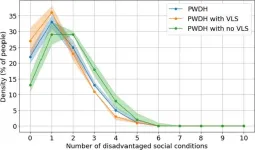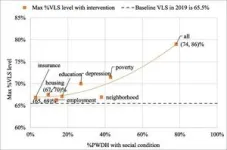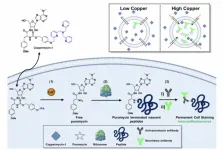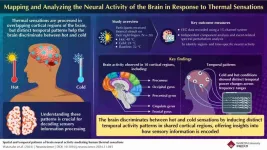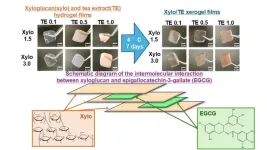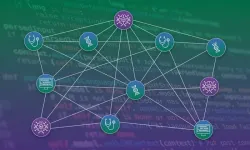(Press-News.org) January 22, 2025
New Study Finds Social Programs Could Reduce the Spread of HIV by 29%
Although HIV was used as a case study, the UMass Amherst researchers say their assessment tool has applications for other diseases
AMHERST, Mass. — Researchers at the University of Massachusetts Amherst have quantified the impacts of a constellation of social factors on the spread of HIV. Their study, published in Health Care Management Science, found that a hypothetical 100% effective intervention addressing barriers to HIV treatment and care from depression, homelessness, individual and neighborhood poverty, education disparities, lack of insurance and unemployment could reduce the national HIV incidence by 29% over 10 years. The mathematical model, a novel integration of machine learning, probability theory and simulation, is positioned to be an important tool for decision-makers to optimize social programs and will have applications for other diseases.
Although 100% suppression of the virus — and consequently a 0% spread of the disease — is feasible through medication, there were still 31,800 new cases in 2022. Furthermore, the lifetime HIV cost per person in America is $420,285.
“HIV strikes me as something that we should be able to eliminate, but it’s really the social vulnerability that is driving the epidemic,” says Chaitra Gopalappa, associate professor of mechanical and industrial engineering at UMass Amherst and corresponding author on the paper. For instance, 44% of people with HIV have some kind of disability and 43% have a household income at or below the poverty line.
While previous work has focused on behavioral risk factors of HIV spread — sexual behavior and needle sharing — less has been done to quantify the association of social factors with HIV risk behaviors.
“Just having behavioral interventions is not going to be sufficient, so what are those additional interventions that are needed?” says Gopalappa. “What our work did was to develop a model that helps us determine what the joint social burden is and how is that related to behavioral mechanisms that increase the risk of HIV?”
Gopalappa, with doctoral candidate Amir Khosheghbal and Manning College of Information and Computer Science professor Peter Haas, first identified the proportion of people with diagnosed HIV (PWDH) who are also affected by depression, homelessness, individual and neighborhood poverty, education disparities, lack of insurance or unemployment. They found that 78% of PWDH are impacted by at least one of these social factors: 58% of PWDH have one or two of these social factors and another 20% have more than two. (It is important to note that the model looked at association and not causality and assumed an idealistic hypothetical intervention that is 100% effective.)
The model takes into consideration that different social factors present different-sized barriers to HIV care and treatment. Compare unemployment and lacking insurance. More PWDH are unemployed than lack insurance — 14% versus 3% of PWDH. However, previous research indicates that insurance has a greater effect on HIV care access than unemployment.
There is a certain chance that an individual faces one or both of these social factors. The disparity gap in HIV care for someone with only one social factor may be different than with the gap for someone with both. The complexity of estimating these disparity gaps increases as more social factors come into play. The model, a novel integration of probability theory with machine learning, is built to quantify this. Followed by a simulation to do a what-if analysis to estimate the impact of a hypothetical intervention that can completely close these disparity gaps i.e., all persons will receive the same higher level of HIV care as that of people with no social burden.
“The likely interventions that we need, like food and housing assistance, are likely to involve some cost but we’re going to be reducing the percent of cases,” says Gopalappa. “The cost of treatment itself is very high. Could investing in prevention avert those future costs for treatment?”
With this perspective, this model can help decision-makers optimize the most cost-effective combination of social programs. If each intervention is like a lever, you may not need to pull every lever to 100% if you can find the optimal combination, she explains. “This tool helps analyze those resource allocation decisions.”
She also highlights that the impacts of social programs extend beyond HIV. “Diseases don’t occur in silos,” she says. “What we’re seeing is that the same social determinants are associated with other diseases from HIV and STIs to mental health, cardiovascular disease and diabetes to maternal morbidity and mortality. The decision-making process for each of these diseases occurs by different entities, but it is in the same people. So, how do we integrate all of these interventions for decision analysis? This is one part of a long-term goal to develop a tool that helps resource allocation strategies.”
This research was supported by the U.S. National Science Foundation.
END
New study finds social programs could reduce the spread of HIV by 29%
Although HIV was used as a case study, the UMass Amherst researchers say their assessment tool has applications for other diseases
2025-01-22
ELSE PRESS RELEASES FROM THIS DATE:
SIDS discovery could ID babies at risk of sudden death
2025-01-22
New University of Virginia School of Medicine research revealing the fingerprints of Sudden Infant Death Syndrome within blood samples could open the door to simple tests to identify babies at risk.
The findings also represent an important step forward in unraveling the causes of SIDS, an unexplained condition that is the No. 1 killer of babies between amonth and a year old.
The UVA researchers analyzed blood serum samples collected from infants who died ...
Ozone exposure linked to hypoxia and arterial stiffness
2025-01-22
Ozone (O3) exposure may reduce the availability of oxygen in the body, resulting in arterial stiffening due to the body’s natural response to create more red blood cells and hemoglobin, according to a study published today in JACC, the flagship journal of the American College of Cardiology.
“Researchers found that even brief exposure to elevated ozone levels reduced blood oxygen saturation, triggered hypoxia-related biomarkers, and increased arterial stiffness, highlighting the novel connection between ozone exposure and arterial stiffness, demonstrated through comprehensive biomarker analysis in a high-altitude ...
Princeton Chemistry develops copper-detection tool to discover possible chelation target for lung cancer
2025-01-22
The Chang Lab at Princeton Chemistry continues in its mission to elucidate the role of metal nutrients in human biology: last year, iron; this year, copper. The lab’s first paper of 2025 showcases its development of a revelatory sensing probe for the detection of copper in human cells and then wields it to uncover how copper may be regulating cell growth in lung cancer.
Researchers also offer a possible treatment modality in which copper chelation shows promising results in certain lung cancers where cells have two related phenomena: a heightened transcription factor responding to oxidative stress and a diminished level of bioavailable copper.
Their collaborative paper, A histochemical ...
Drug candidate eliminates breast cancer tumors in mice in a single dose
2025-01-22
Despite significant therapeutic advances, breast cancer remains a leading cause of cancer-related death in women. Treatment typically involves surgery and follow-up hormone therapy, but late effects of these treatments include osteoporosis, sexual dysfunction and blood clots. Now, researchers reporting in ACS Central Science have created a novel treatment that eliminated small breast tumors and significantly shrank large tumors in mice in a single dose, without problematic side effects.
Most breast cancers are ...
WSU study shows travelers are dreaming forward, not looking back
2025-01-22
PULLMAN, Wash. – When it comes to getting people to want to go places, the future is ever more lovely than the past, according to a new Washington State University-led study in the Journal of Hospitality and Tourism Research.
Led by Ruiying Cai, an assistant professor in the Carson College of Business, the study found that forestalgia-focused destination ads—those that emphasize an idealized future—are more effective at enticing travelers to click the purchase button for a vacation than ads based on fond recollections. The research also revealed that forestalgia advertising is particularly effective for getting people to book near-term trips, as imagining ...
Black immigrants attract white residents to neighborhoods
2025-01-22
COLUMBUS, Ohio – Black immigrants moving into a neighborhood can help shift the overall racial and ethnic character of the area, a new study suggests.
A researcher from The Ohio State University found that when Black immigrants move into a majority native-Black neighborhood, there is an increase in the white population moving in while native Black residents move out.
“Blackness can’t be treated as a monolith within the United States today, where there is a growing Black immigrant population,” said Nima Dahir, author of the study and assistant professor of sociology at Ohio State.
“There is a lot of complexity ...
Hot or cold? How the brain deciphers thermal sensations
2025-01-22
When we touch something hot or cold, the temperature is consciously sensed. Previous studies have shown that the cortex, the outermost layer of the brain, is responsible for thermal sensations. However, how the cortex determines whether something is hot or cold is not well understood. Thermal sensitivity is often subjective and individualistic; what is a comfortable temperature for someone might be too hot or too cold for someone else.
In a new study, Professor Kei Nagashima from the Body Temperature and Fluid Laboratory, Faculty of Human Sciences, ...
Green tea-based adhesive films show promise as a novel treatment for oral mucositis
2025-01-22
Green tea shines as a natural powerhouse of antioxidants, with catechins leading the charge among its polyphenols, which protect cells from oxidative stress. These powerful compounds neutralize harmful free radicals generated during cancer treatment. The anti-inflammatory properties of green tea can alleviate oral mucositis, a painful inflammation of the mouth lining often caused by chemotherapy and radiation.
Building on these benefits, researchers at the Tokyo University of Science (TUS), Japan, have explored the potential of tea catechins in developing ...
Single-cell elemental analysis using Inductively Coupled Plasma Mass Spectrometry (ICP-MS)
2025-01-22
Trace metals are crucial for the growth of all living organisms. Understanding the role of these trace metals on the metabolism is essential for maintaining a stable state of the organism. Additionally, human beings are also facing constant exposure to various harmful heavy metals due to various types of pollution. Collectively, these aspects have led to research and development in the field of analytical techniques that can help in identifying the level of these trace metals in our cells.
Inductively coupled ...
BioChatter: making large language models accessible for biomedical research
2025-01-22
Large language models (LLMs) have transformed how many of us work, from supporting content creation and coding to improving search engines. However, the lack of transparency, reproducibility, and customisation of LLMs remains a challenge that restricts their widespread use in biomedical research.
For biomedical researchers, optimising LLMs for a specific research question can be daunting, because it requires programming skills and machine learning expertise. Such barriers have reduced the adoption of LLMs for many research tasks, including data extraction and analysis.
A new publication in Nature Biotechnology introduces BioChatter to help overcome ...
LAST 30 PRESS RELEASES:
ASH 2025: AI uncovers how DNA architecture failures trigger blood cancer
ASH 2025: New study shows that patients can safely receive stem cell transplants from mismatched, unrelated donors
Protective regimen allows successful stem cell transplant even without close genetic match between donor and recipient
Continuous and fixed-duration treatments result in similar outcomes for CLL
Measurable residual disease shows strong potential as an early indicator of survival in patients with acute myeloid leukemia
Chemotherapy and radiation are comparable as pre-transplant conditioning for patients with b-acute lymphoblastic leukemia who have no measurable residual disease
Roughly one-third of families with children being treated for leukemia struggle to pay living expenses
Quality improvement project results in increased screening and treatment for iron deficiency in pregnancy
IV iron improves survival, increases hemoglobin in hospitalized patients with iron-deficiency anemia and an acute infection
Black patients with acute myeloid leukemia are younger at diagnosis and experience poorer survival outcomes than White patients
Emergency departments fall short on delivering timely treatment for sickle cell pain
Study shows no clear evidence of harm from hydroxyurea use during pregnancy
Long-term outlook is positive for most after hematopoietic cell transplant for sickle cell disease
Study offers real-world data on commercial implementation of gene therapies for sickle cell disease and beta thalassemia
Early results suggest exa-cel gene therapy works well in children
NTIDE: Disability employment holds steady after data hiatus
Social lives of viruses affect antiviral resistance
Dose of psilocybin, dash of rabies point to treatment for depression
Helping health care providers navigate social, political, and legal barriers to patient care
Barrow Neurological Institute, University of Calgary study urges “major change” to migraine treatment in Emergency Departments
Using smartphones to improve disaster search and rescue
Robust new photocatalyst paves the way for cleaner hydrogen peroxide production and greener chemical manufacturing
Ultrafast material captures toxic PFAS at record speed and capacity
Plant phenolic acids supercharge old antibiotics against multidrug resistant E. coli
UNC-Chapel Hill study shows AI can dramatically speed up digitizing natural history collections
OYE Therapeutics closes $5M convertible note round, advancing toward clinical development
Membrane ‘neighborhood’ helps transporter protein regulate cell signaling
Naval aviator turned NPS doctoral student earns national recognition for applied quantum research
Astronomers watch stars explode in real time through new images
Carbon-negative building material developed at Worcester Polytechnic Institute published in matter
[Press-News.org] New study finds social programs could reduce the spread of HIV by 29%Although HIV was used as a case study, the UMass Amherst researchers say their assessment tool has applications for other diseases
